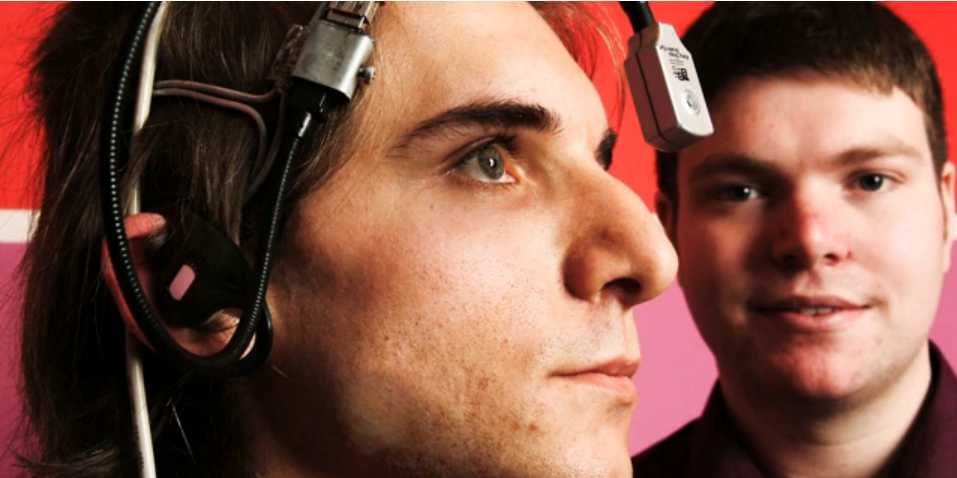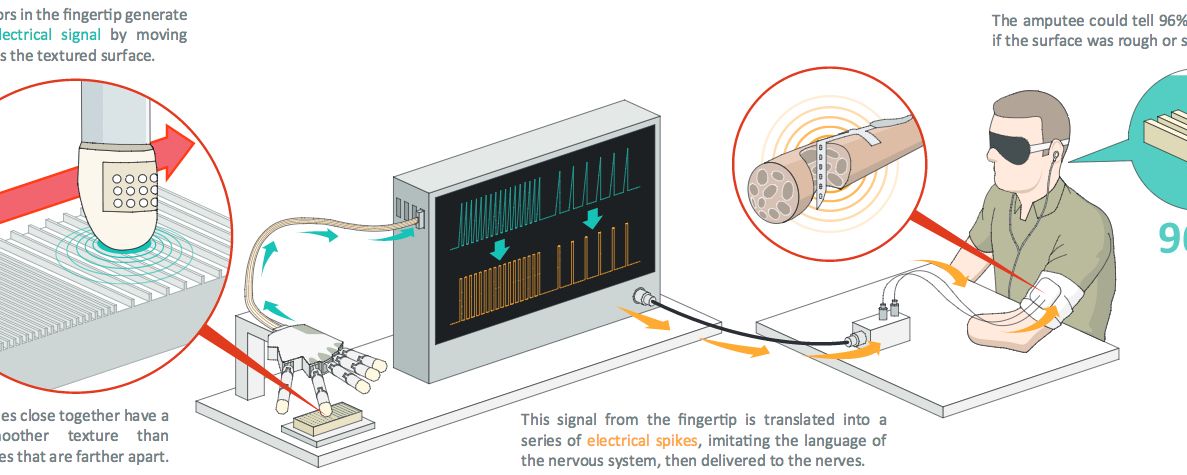Frieda Klotz visited the ‘world’s first cyborg fair’ with one question: are cyborgs a real thing, or are these people just kidding themselves?


It’s the holy grail in bionics—artificial limbs that function entirely intuitively.
Bionics: surgically inserted sensors controlling a prosthetic limb. Meet the man who sometimes forgets that his bionic leg is not his own.

Amputee Dennis Aabo Sørensen is the first person in the world to recognize texture (smoothness vs. roughness) using an artificial “bionic” fingertip surgically connected to nerves in his upper arm. The experimental system was developed by EPFL (Ecole polytechnique fédérale de Lausanne) and SSSA (Scuola Superiore Sant’Anna).
“The stimulation felt almost like what I would feel with my hand,” says Sørensen. “I felt the texture sensations at the tip of the index finger of my phantom hand.”
Cool beans.
Using a bionic fingertip, an amputee for the first time has been able to feel rough and smooth textures in real-time, as though the fingertip were naturally connected to his hand.
After Luke Skywalker got his hand cut off during a duel with Darth Vader in “Star Wars,” the young Jedi received an artificial hand that helped him both grip and feel again. Scientists worldwide are seeking to make this vision from science fiction a reality with prosthetic limbs that are wired directly into the nervous systems of their recipients.
Researchers experimented with amputee Dennis Aabo Sørensen from Denmark, who damaged his left hand more than a decade ago while playing with fireworks. Doctors immediately amputated the appendage after Sørensen was brought to a hospital. [Bionic Humans: Top 10 Technologies].

In SELF/LESS, a dying old man (Academy Award winner Ben Kingsley) transfers his consciousness to the body of a healthy young man (Ryan Reynolds). If you’re into immortality, that’s pretty good product packaging, no?
But this thought-provoking psychological thriller also raises fundamental and felicitous ethical questions about extending life beyond its natural boundaries. Postulating the moral and ethical issues that surround mortality have long been defining characteristics of many notable stories within the sci-fi genre. In fact, the Mary Shelley’s age-old novel, Frankenstein, while having little to no direct plot overlaps [with SELF/LESS], it is considered by many to be among the first examples of the science fiction genre.
Screenwriters and brothers David and Alex Pastor show the timelessness of society’s fascination with immortality. However, their exploration reflects a rapidly growing deviation from the tale’s derivation as it lies within traditional science fiction. This shift can be defined, on the most basic level as the genre losing it’s implied fictitious base. Sure, while we have yet to clone dinosaurs, many core elements of beloved past sic-fi films are growing well within our reach, if not in our present and every-day lives. From Luke Skywalker’s prosthetic hand in Star Wars Episode V: The Empire Strikes Back (1980) to the Matrix Sentinal’s (1999) of our past science fiction films help define our current reality to Will Smith’s bionic arm in I, Robot.

BMI’s (according to DARPA and David Axe) could begin as early as 2017 on humans. The plan is to use stentrodes. Testing has already proven success on sheep. I personally have concerns in both a health (as the article highlighted prone to blood clots) as well as anything connecting via Wi-Fi or the net with hackers trying to challenge themselves to prove anything is hackable; that before this goes live on a person we make sure that we have a more secure hack-resistant net before someone is injured or in case could injure someone else.
Soldiers could control drones with a thought.